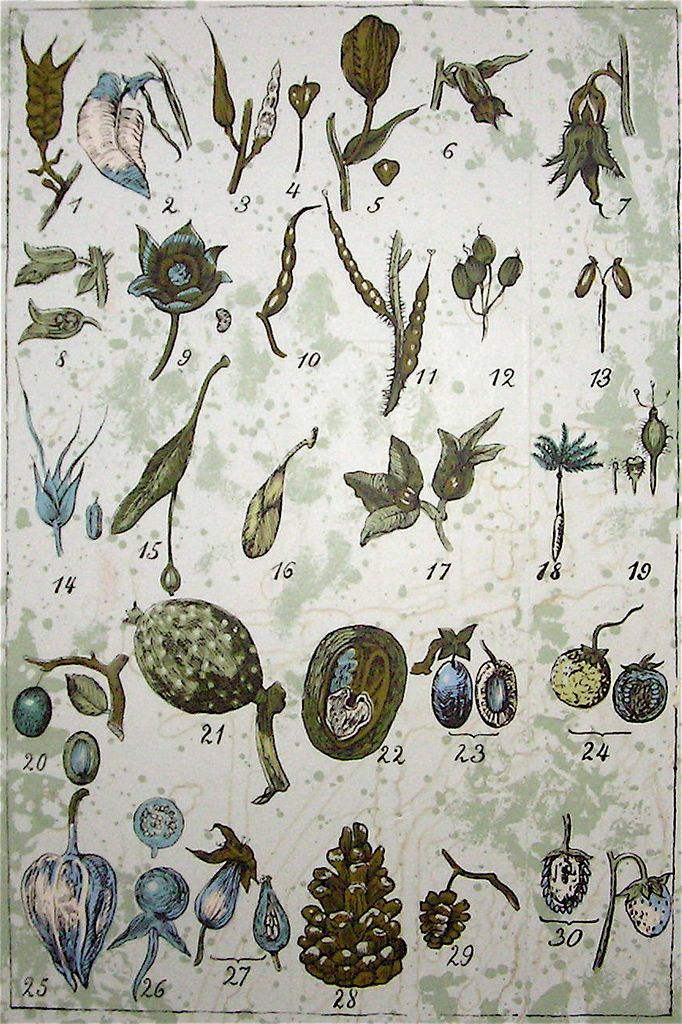Decorative Jewelry of the Art Deco Era: Origins, Aesthetics, and Pricing
Art Deco Jewelry: A Revolutionary Sparkle in the Modern Era
Dive into the vibrant world of Art Deco jewelry, a dazzling ode to the rebellious spirit of the 1920s and 1930s! This splendiferous era, characterized by its epic geometric patterns, innovative use of materials, and dramatic architectural influences, revolutionized the jewelry industry and continues to enthrall collectors and fashion enthusiasts today. Enough jibber-jabber, let's dive into the glittering realm of Art Deco bling!
The Art Deco Revolution
The Art Deco movement signaled a radical departure from conventional jewelry design, embracing the zeitgeist of modernity and technological advancements that defined the Roaring Twenties. This audacious new style emerged during a time of massive social upheaval, when old values crumbled and were replaced by contemporary ideals.
- Earth to humans! The term "Art Deco" stems from the 1925 International Exhibition of Decorative and Industrial Arts in Paris — the spotlight event where this style strutted its stuff on the global stage for the first time.
- The Girl Power Act! The women's liberation movement gained traction during this period, and the bold, geometric designs of Art Deco jewelry mirrored the newfound independence and empowerment of women. Adios, dainty Victorian and Edwardian trinkets!
- Fuel up those Roaring 20s! The exhilarating dynamism of the 1920s was fueled by post-war economic prosperity and rapid technological advancements. This golden age spawned an insatiable appetite for luxury goods and breathtaking innovations in jewelry design.
- The first true modern jewelry style! Art Deco shattered the shackles of historical revival trends that had dominated previous decades, asserting itself as the primordial contemporary jewelry style. It's influence extended across jewelry, architecture, furniture, and graphic design, weaving together a cohesive modern aesthetic that defined the era.
- World domination! Art Deco's appeal spread across continents via international exhibitions, fashion magazines, and Hollywood films, making it one of the first global design sensations in jewelry history.
Art Deco jewelry changed the jewelry game, instilling fresh principles that continue to inspire contemporary designs. This audacious movement's impact transcends its time period, leaving an indelible mark on modern design.
Historical Odyssey of Art Deco Jewelry
Art Deco emerged from the ashes of World War I, mirroring society's yearning for a break from tradition and an embrace of modernity. This revolutionary period in jewelry design coincided with monumental social changes, technology breakthroughs, and cultural transformations, altering how people experienced jewelry forever.
- Blinkin' heck! Art Deco officially made its grand debut at the 1925 Paris International Exhibition of Decorative and Industrial Arts, though the style had been buzzing since the early 1920s. This landmark event brought together artistic titans and jewelry mavericks from around the world, solidifying Art Deco as a dominant aesthetic.
- Money talks! The post-war economic boom, particularly in America during the Roaring Twenties, fueled the soaring demand for luxury goods and audacious designs. Jewelers gleefully took advantage of the economic climate, crafting breathtaking, avant-garde creations for a captivated audience.
- The Fabled Few! Jewelry dynasties like Cartier, Van Cleef & Arpels, and Boucheron played critical roles in the development of the Art Deco style, nurturing innovative designers who dared to bend the rules and catapult Art Deco into the spotlight.
- A Cleopatra comeback! The discovery of King Tutankhamun's tomb in 1922 had a profound impact on Art Deco, igniting a fad for Egyptian motifs and unleashing a torrent of colorful new design combinations inspired by ancient artifacts.
- The Rise of the Strong and the Gorgeous! The women's liberation movement influenced jewelry design significantly, as the short, bobbed hairstyle created demand for dramatic earrings and longer, space-age necklaces that complemented the era's straight-cut dresses and sleek silhouettes.
- Engineering marvels! Improvements in gem cutting and metalworking, particularly in platinum fabrication, allowed jewelers to create intricate geometric designs that pushed the boundaries of what had been possible in jewelry. It was a style revolution, for sure!
- Cubism's impact! Modern art movements, particularly Cubism, played a crucial role in shaping Art Deco jewelry design, as artists and jewelers embraced abstraction and geometric patterns, moving away from nature-inspired designs and venturing into the land of the abstract.
The historical backdrop of Art Deco jewelry reveals how this audacious style emerged from the perfect storm of social change, technological innovation, and artistic experimentation. This transformative period left an indelible imprint on how jewelry is conceived, designed, and worn, establishing principles that continue to inspire contemporary designers.
Elementary, My Dear Art Deco Jewelry
Art Deco jewelry stands out for its unique characteristics that broke away from tradition to embrace modernity through bold geometric shapes and clean lines. This rebellious aesthetic embodied the spirit of the Age of Machines, reflecting society's fascination with machinery, speed, and industrial progress, while incorporating influences from diverse cultural sources.
- Simple Syntax! Geometric patterns dominated Art Deco jewelry design, as pieces boasted strong linear symmetry and intricate, repeating shapes. They sparked visual excitement, reflecting the modern machine aesthetic.
- Rooted in Contradiction! Contrasting colors emerged as a hallmark, as jewelers intentionally paired white diamonds with black onyx or combined vibrant precious stones like sapphires, emeralds, and rubies in bold patterns. This creative color clash made a bold statement.
- Skyscraper Swagger! The stepped design motif, influenced by sleek modern architecture, appeared frequently in Art Deco jewelry designs. This architectural inspiration breathed depth and dimension into the styles, symbolizing societal changes.
- Foreign Flares! Abstract patterns derived from far-flung cultures, like Egyptian, African, and East Asian art, were woven into designs. The discovery of Tutankhamun's tomb added an intriguing dash of Egyptian influences to the mix.
- Sunburst Spectacle! Sunburst and fan patterns cropped up often, symbolizing the exuberant energy and vitality of the modern age. These lively designs usually featured graduated gems arranged in rays, creating a sense of movement and motion.
- Cinch the Neck! Long pendant necklaces became signature Art Deco pieces, complementing the newfangled straight silhouettes of dresses. They often ended in geometric tassels or bold geometric pendants, adding a touch of glamour and modernity.
- Mathematical Precision! Craftsmen adhered to mathematical precision in their designs, using rulers and geometric tools to create perfectly balanced compositions. This exacting approach represented a departure from the natural, freeform designs of earlier periods.
The magical, elemental features of Art Deco jewelry represented more than mere design — they embodied the essence of the Age of Modernity. These design characteristics left an indelible mark on jewelry, creating a visual language that remains instantly recognizable today, demonstrating how Art Deco successfully translated the spirit of the age into wearable art.
Delectable Deco Delights - Material Selection
The Art Deco period reshaped the jewelry world by merging traditional precious materials with modern industrial elements, establishing new standards for combining luxury and modernity. This era witnessed the ascension of platinum, the emergence of white gold, and the advent of synthetic materials as fashionable alternatives for the masses.
- The Platinum Age! Platinum reigned supreme during the Art Deco period, thanks to its strength and brilliant white color. It allowed jewelers to craft intricate, employerly designs that highlighted the shimmering beauty of diamonds.
- Gold Master! White gold emerged during this era, based on a fusion of 18k or 14k gold with palladium or nickel to provide an affordable alternative to platinum, while preserving the coveted white color.
- Sparkle Central! Diamonds were used in revolutionary ways, thanks to newly developed cutting techniques that produced geometric shapes. Calibré cuts, for example, allowed jewelers to create precise, architectural patterns with minimal waste.
- Gems Galore! Colored gemstones played a vital role, with sapphires, emeralds, rubies, and onyx frequently combined to create striking contrasts. These precious stones were often cut in innovative geometric shapes to complement the era's angular, modern style.
- Synthetic Substances! Synthetic materials like bakelite and galalith were embraced by jewelers, reflecting the era's fascination with technological innovations. These moldable substances made it possible to create daring, attention-grabbing designs for both the high-end and mass markets.
- Industrial Inspiration! Industrial metals like chrome, steel, and brass made their way into fine jewelry for the first time, often incorporated into unexpected partnerships with precious materials. This fusion of luxury and modern materials set the stage for future combinations.
- Exotic Extravaganzas! Egyptian-inspired materials like lapis lazuli, carnelian, and turquoise gained popularity following the discovery of Tutankhamun's tomb, introducing new motifs and palettes inspired by ancient Egyptian art.
The pioneering approach to materials during the Art Deco period marked a clear break from traditional jewelry making, establishing new standards for merging luxury with modern materials. This groundbreaking attitude has left an enduring legacy in contemporary jewelry design by championing the marriage of sophistication with modernity.
Divine Deco Delights - Jewelry Types
Art Deco jewelry showcased a dizzying array of unique, statement pieces that echoed the era's modern aesthetic and changing fashion needs. Each jewelry type from this period featured characteristic design elements that set it apart, from groundbreaking clasps to geometric stone arrangements.
- Sensational Sautoirs! Sautoir necklaces emerged as iconic Art Deco creations, featuring chains or strings of pearls that terminated in dazzling geometric pendants or tassels. They often draped down to the waist, making them suitable for a variety of wardrobe styles.
- Sophisticated Double-Clips! Double-clip brooches emerged as a versatile innovation of the period, allowing wearers to connect the two components together for a unified brooch, or split them apart and attach them to separate items like collars, belts, or hats.
- Regal Bandeaus and Tiara Headpieces! These ornate pieces, featuring geometric patterns and precious stones, wrapped around the forehead and complemented the era's close-fitting cloche hats and short hairstyles.
- Cocktail Revelry! Cocktail rings became signature Art Deco pieces, featuring large center stones encircled by geometric patterns of smaller stones. These bold baubles rivaled their wearers' charisma and glamour.
- Bracelets in the Round! Link bracelets took on new shapes, featuring geometric shapes connected in intricate, repeating patterns. Flexible, strap bracelets became particularly popular, often adorned with intricate pavé work or calibré cuts arranged in abstract designs.
- Earrings to Remember! Art Deco earrings were often long and dramatic, designed to be visible with the era's short, bobbed hairstyles. These dazzling danglers often showcased graduated diamond drops or versatile geometric patterns that swung with grace and dynamism.
- Precision and Pragmatism! Jabot pins, which extended from two decorative ends connected by a single pin, became popular for securing scarves and lapels. These companionable companions featured intricate, angular patterns that caught the eye.
The diverse delight of Art Deco jewelry pieces reflected the era's progressive thinking as they pushed the borders of design, embraced technological advancements, and played with fashion trends. These audacious creations celebrated form and function in perfect harmony, making them ideal companions for contemporary fashion enthusiasts.
Deciphering the Real Deco Deal
Authenticating Art Deco jewelry demands keen observation of design elements, materials, construction techniques, and aging patterns. Recognizing these key characteristics empowers collectors to distinguish genuine pieces from subsequent reproductions, though it should be emphasized that exceptional Art Deco-inspired pieces continue to be produced today.
- Master Craftsmanship! Construction methods from the 1920s and 1930s demonstrate specific handcrafting techniques, especially in platinum jewelry. Look for hand-cut calibré stones that fit seamlessly into settings, as well as meticulous milgrain beading along edges.
- Aging Gracefully! Authentic Art Deco pieces often display signs of graceful aging, such as slight patina on metals or natural wear patterns on clasps, clips, or hinges. However, excessive wear or subpar repairs may indicate later alterations or replicas.
- Pure Platinum! Authentic platinum pieces from this era are marked "Plat" or "950," boasting a natural white color and slight heft. Early white gold pieces were typically marked "18K" or "14K" alongside manufacturers' marks.
- Cutting-Edge Precision! Diamonds often featured transitional or early modern cuts, while colored stones were frequently cut in geometric shapes to fit the angular Art Deco aesthetic. Be wary of laser-cut gemstones, which are indicative of modern reproductions.
- High-Class Hallmarks! Genuine pieces typically bore period-appropriate hallmarks or company marks. Researching these seems vital, as many famous Art Deco jewelry houses have well-documented histories. Keep in mind that some authentic pieces may have lost their hallmarks due to wear or repair.
- Detail-Oriented Fittings! Authentic Art Deco jewelry pieces often featured complex, three-dimensional geometric designs with attention to detail on both the front and back surfaces. This hallmark of exceptional craftsmanship extends to aspects that are not immediately visible when worn.
Genuine Art Deco jewelry pieces evoke historical and artistic significance, underscoring the exceptional workmanship and groundbreaking designs of their era. While today's artisans continue to craft beautiful Art Deco-inspired pieces, understanding these authentication tips equips collectors with the knowledge needed to make informed decisions about their precious acquisitions.
Vanilla Expertise: Art Deco Jewelry Care
Caring for Art Deco jewelry requires special attention to preserve the beauty and structural integrity of these historical treasures. Given their age and delicate materials, they need thoughtful care to maintain their original sparkle and magnificence.
- Regular Cleaning Ritual! Professional cleaning is recommended annually for Art Deco pieces, especially those featuring complex settings or multiple gemstones. A skilled jeweler can clean your piece while checking for loose stones or worn prongs, ensuring it remains in pristine condition.
- Soft Storage Solutions! Art Deco jewelry pieces should be stored individually in cloth pouches or designated compartments to prevent scratches. Platinum and gold pieces from this era require special care due to their susceptibility to scratching by other materials.
- Minimalist Maintenance! Gentle cleaning at home can be performed using a soft brush, mild soap, and warm water without the aid of harsh chemicals or ultrasonic cleaners, which can potentially damage delicate settings or aged materials. Test-run your cleaning routine on a small, inconspicuous area to avoid unexpected damage.
- Temperature Responsibility! Art Deco jewelry pieces may contain glue, adhesive, or materials sensitive to sudden temperature changes or extreme temperatures. Avoid exposing these pieces to excessive heat or cold, as it may contribute to premature aging or damage.
- Material Matter! It's important to respect the combination of materials used in Art Deco jewelry, as each may require different care approaches. Familiarize yourself with the components of your piece to ensure you cater to their individual needs.
- Telltale Signs! Identify and address any signs of repair or wear on your piece, such as loose stones, worn prongs, or underperforming clasps. Early intervention is crucial in preventing further damage or loss.
- Proper Practice! Wear your Art Deco jewelry with care and remove it before engaging in activities that may harm the delicate materials, such as swimming, working out, or handling chemicals. Treat your vintage treasure with respect!
With proper care, Art Deco jewelry can be passed down through generations, enjoyed by collectors and admirers, and maintained in pristine condition. Seeking professional assistance when necessary is essential in preserving the intrinsic value and inner radiance of these stunning creations.
Fashionable Union: Art Deco Jewelry Styling
Art Deco jewelry's bold, geometric designs and lively aesthetics continue to create stunning contrasts with contemporary minimalist fashion, making them the perfect accessory for fashion-conscious individuals seeking to make a bold statement. Mastering the art of integrating Art Deco jewelry into modern wardrobes demonstrates an appreciation for historical craftsmanship and modern style.
- Stunning Simplicity! Art Deco jewelry pairs exceptionally well with modern minimalist fashion, as their strong geometric patterns provide a striking contrast against simple, clean-lined clothing. A dramatic cuff bracelet or dramatic brooch can elevate a basic black dress, turning it into a truly memorable ensemble.
- Intelligent Layering! Commit thoughtfully to layering Art Deco pieces, incorporating multiple styles, and keeping other accessories minimal. Long sautoir necklaces can accompany shorter geometric pendants, while maintaining a sense of balance.
- Well-Dressed Wardrobe! Consider the neckline of your garment when choosing Art Deco pieces. V-necks complement long pendants, while high necklines suit brooches or clips. The angular patterns of Art Deco jewelry often echo or complement modern clothing's architectural lines.
- Evening Excellence! Art Deco jewelry pieces shine at special occasions, effortlessly elevating evening gowns or suits. A paired double-clip brooch or dramatic chandelier earrings can make every evening wear time a noteworthy affair.
- Professional Pow-wow! Modify Art Deco jewelry pieces for the office, selecting subtle, sleek designs that incorporate the era's geometric patterns. A simple geometric brooch or delicate cuff bracelet adds sophistication to a business suit or blouse.
- Judicious Adaptation! Embrace the creative potential of Art Deco jewelry by adapting it to modern uses — period double-clip brooches can become chic earrings, long necklaces can function as bracelets, and clips can accent belts or handbags for an unexpected twist.
By mastering the art of incorporating Art Deco jewelry into modern wardrobes, fashionists can honor the original spirit of the Art Deco movement while creating contemporary, stylish looks that demand attention. Art Deco jewelry has retained its allure due to its bold designs, exceptional craftsmanship, and varied artistic influences, making it an ideal fashion statement for the stylish and discerning.
Art Deco Jewelry Collection and Appreciation
Art Deco jewelry boasts an impressive presence in the vintage jewelry market, offering a range of desirable pieces, from affordable costume jewelry to lavish gemstone creations. Understanding the factors that impact value helps collectors make educated decisions while building significant, meaningful collections.
- Designer Signatures! Designer signatures significantly impact a piece's value, with renowned houses like Cartier, Van Cleef & Arpels, and Boucheron commanding premium prices. Original signed pieces with documented provenance fetch the highest prices in the collector's market.
- Material Matters! Quality craftsmanship, especially in platinum pieces, influences the price. The presence of high-quality diamonds and precious stones, particularly in their original cuts and settings, contributes substantially to a piece's value.
- Somethin' Old, Somethin' New! Condition plays a crucial role in a piece's value, with authentic pieces in excellent, undamaged condition attracting the highest prices. Mint condition pieces, especially those retaining their original stones, settings, and clasps, are the most desirable.
- Rarity Reigns Supreme! The scarcity of a piece impacts its price, with unique designs or combinations of materials commanding exorbitant prices. Pieces that epitomize quintessential Art Deco themes and designs often fetch hefty premiums.
- Historical Significance! Historical significance can bolster a piece's value, as items with documented connections to notable figures, famous events, or important innovations in jewelry design often command a higher price.
- Size Spectrum! The size of a piece affects its value, with larger, more dramatic pieces often commanding higher prices. However, exceptional craftsmanship in smaller pieces can also yield impressive prices.
- Fickle Fashion Fluctuations! Market trends impact a piece's value, as certain design elements or motifs garner intense interest, driving up demand and prices. However, classic Art Deco pieces with strong geometric patterns and high-quality materials maintain their value regardless of shifting fashion trends.
Building an Art Deco jewelry collection merits patience, knowledge, and strategic planning. Identifying the perfect pieces requires research, networking with reputable dealers, and understanding the nuances of the market. Quality pieces continue to hold their value, making the art of collecting a richly rewarding experience for both the collector and the admirer.
Conclusion
Art Deco jewelry represents one of the most influential design movements of the 20th century, marking a decisive break from traditional styles while paving the way for modern jewelry design. The movement's innovative use of materials, bold geometric patterns, and distinctive architectural influences captured society's fascination with modernity and industrial progress, creating pieces that remain bold and timeless even today.
Art Deco's enduring appeal is rooted in its marriage of art and craftsmanship with historical significance, making it more than just a fashion statement. Whether worn as statement pieces, collected as investments, or admired as historical artifacts, Art Deco jewelry continues to captivate new audiences with its bold, iconic designs and unwavering allure. The spirit of Art Deco lives on, reminding us that true innovation transcends time and inspires generations.
Endnotes
[1] Barton, H. (n.d.). Art Deco. In GemSource Knowledge Base. Retrieved from https://www.gemsources.com/en/encyclopedia/art-deco/[2] James, T. F. (n.d.). The Fascinating World of Cubism Jewelry. In Jewelry News Network. Retrieved from https://www.jnvinc.com/cubism-jewelry-a-fascinating-and-colourful-history/[3] Wallman, R. (2020). Art Deco. In Encyclopædia Britannica. Retrieved from https://www.britannica.com/art/Art-Deco[4] Schaller, T. (2018). The Thrill of Mechanical Symmetry. In Art Daily. Retrieved from https://artdaily.com/news/80610/The-Thrill-of-Mechanical-Symmetry
Art Deco's influence extended beyond jewelry, impacting various aspects of lifestyle.
- In the realm of fashion-and-beauty, Art Deco's geometric patterns and opulent materials found a place in hairstyles, clothing, and cosmetics, epitomizing the modern, intricate, and extravagant.
- The movement also contributed to food-and-drink culture, with luxury dining establishments embracing avant-garde designs and exotic ingredients to create contemporary culinary experiences.
- Art Deco-inspired home-and-garden designs, characterized by clean lines, geometric patterns, and opulent materials, offered a perfect backdrop for the Roaring Twenties lifestyle.
- In the pursuit of self-development and knowledge, many influential thinkers and artists of the time were captivated by the tenets of Art Deco and sought to understand its impact on modern culture, ushering in a new era of artistic expression and intellectual curiosity.








